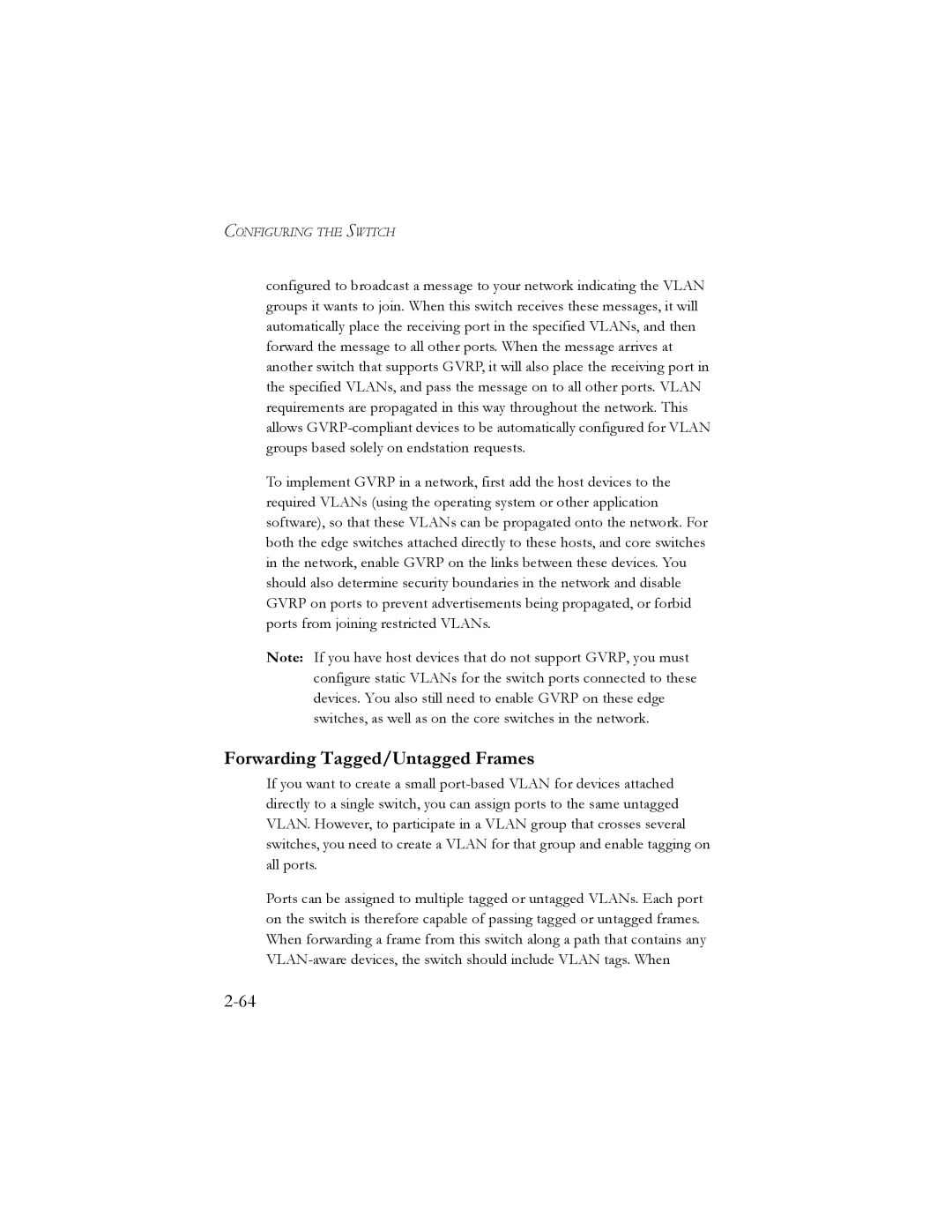CONFIGURING THE SWITCH
configured to broadcast a message to your network indicating the VLAN groups it wants to join. When this switch receives these messages, it will automatically place the receiving port in the specified VLANs, and then forward the message to all other ports. When the message arrives at another switch that supports GVRP, it will also place the receiving port in the specified VLANs, and pass the message on to all other ports. VLAN requirements are propagated in this way throughout the network. This allows
To implement GVRP in a network, first add the host devices to the required VLANs (using the operating system or other application software), so that these VLANs can be propagated onto the network. For both the edge switches attached directly to these hosts, and core switches in the network, enable GVRP on the links between these devices. You should also determine security boundaries in the network and disable GVRP on ports to prevent advertisements being propagated, or forbid ports from joining restricted VLANs.
Note: If you have host devices that do not support GVRP, you must configure static VLANs for the switch ports connected to these devices. You also still need to enable GVRP on these edge switches, as well as on the core switches in the network.
Forwarding Tagged/Untagged Frames
If you want to create a small
Ports can be assigned to multiple tagged or untagged VLANs. Each port on the switch is therefore capable of passing tagged or untagged frames. When forwarding a frame from this switch along a path that contains any
